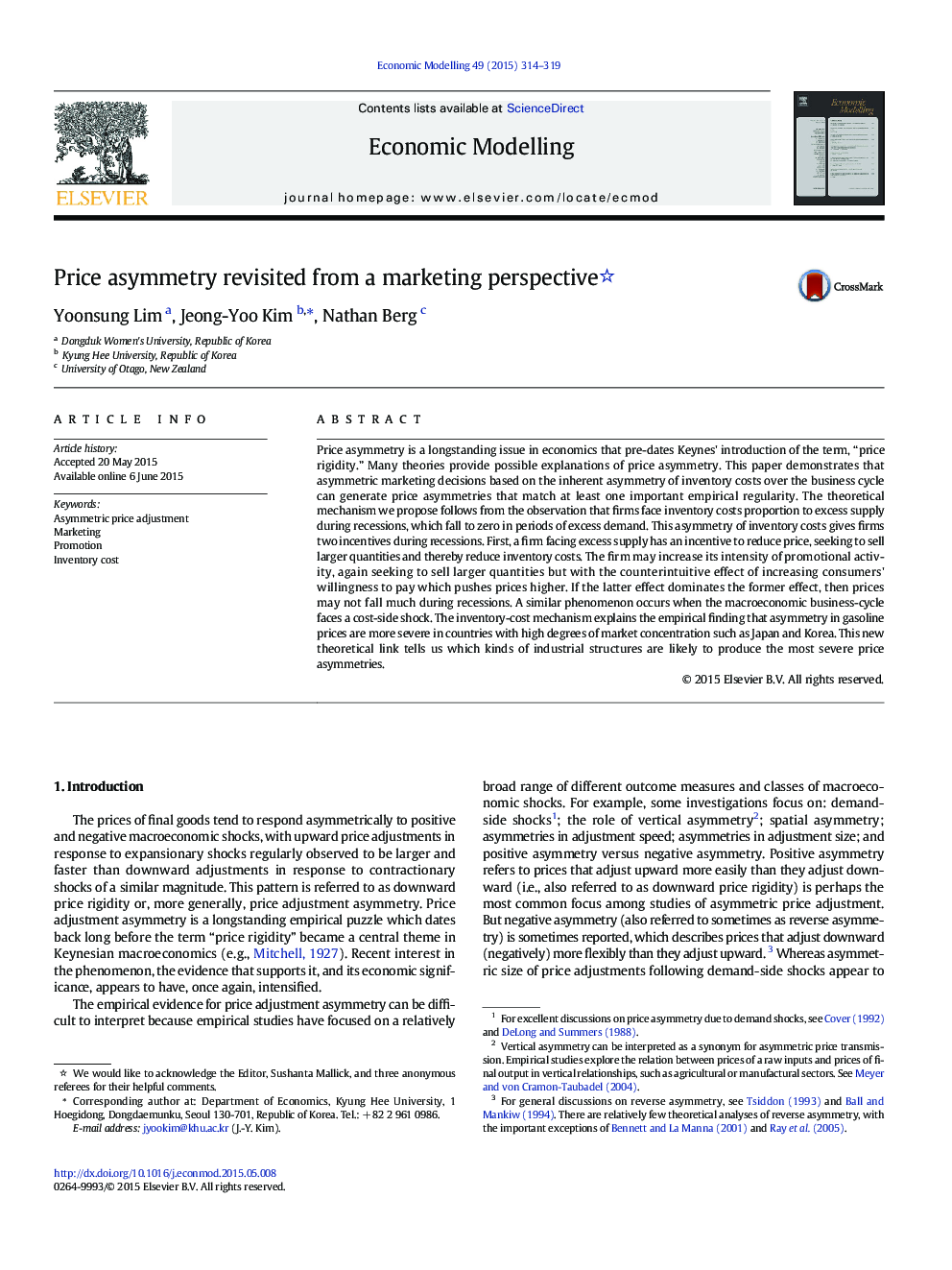| Article ID | Journal | Published Year | Pages | File Type |
|---|---|---|---|---|
| 5053835 | Economic Modelling | 2015 | 6 Pages |
Abstract
Price asymmetry is a longstanding issue in economics that pre-dates Keynes' introduction of the term, “price rigidity.” Many theories provide possible explanations of price asymmetry. This paper demonstrates that asymmetric marketing decisions based on the inherent asymmetry of inventory costs over the business cycle can generate price asymmetries that match at least one important empirical regularity. The theoretical mechanism we propose follows from the observation that firms face inventory costs proportion to excess supply during recessions, which fall to zero in periods of excess demand. This asymmetry of inventory costs gives firms two incentives during recessions. First, a firm facing excess supply has an incentive to reduce price, seeking to sell larger quantities and thereby reduce inventory costs. The firm may increase its intensity of promotional activity, again seeking to sell larger quantities but with the counterintuitive effect of increasing consumers' willingness to pay which pushes prices higher. If the latter effect dominates the former effect, then prices may not fall much during recessions. A similar phenomenon occurs when the macroeconomic business-cycle faces a cost-side shock. The inventory-cost mechanism explains the empirical finding that asymmetry in gasoline prices are more severe in countries with high degrees of market concentration such as Japan and Korea. This new theoretical link tells us which kinds of industrial structures are likely to produce the most severe price asymmetries.
Related Topics
Social Sciences and Humanities
Economics, Econometrics and Finance
Economics and Econometrics
Authors
Yoonsung Lim, Jeong-Yoo Kim, Nathan Berg,
